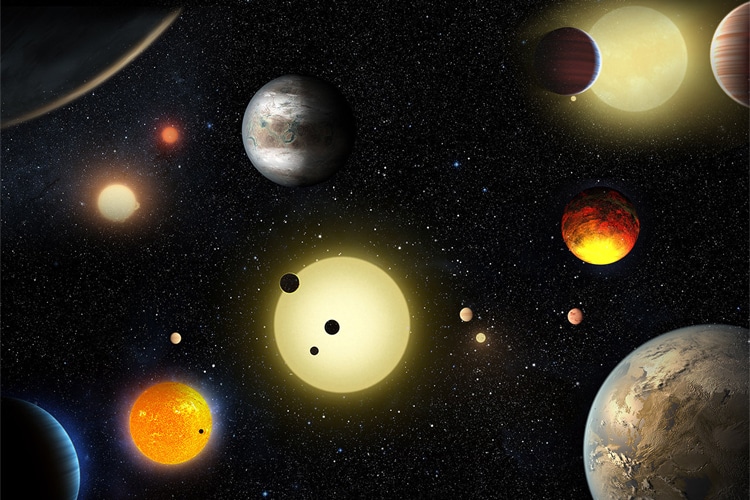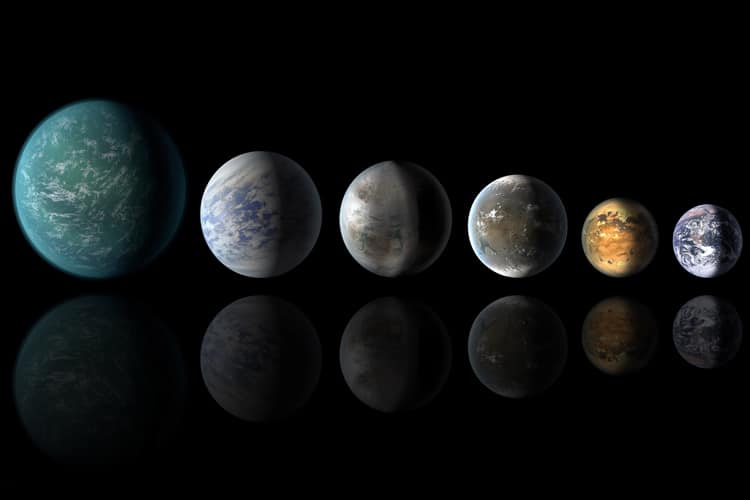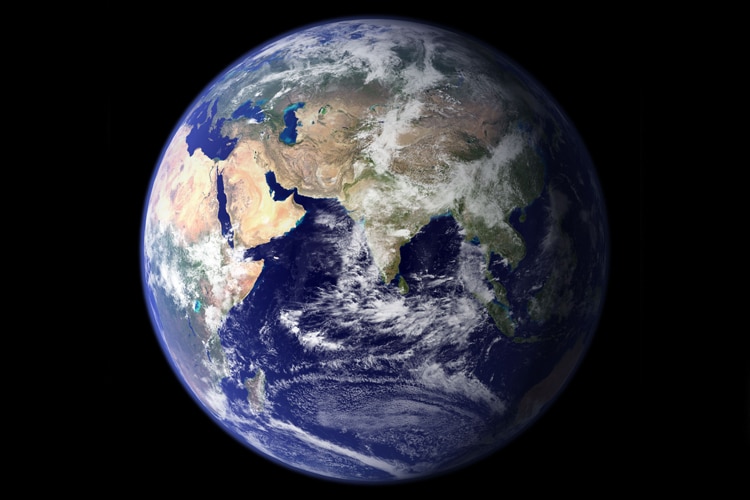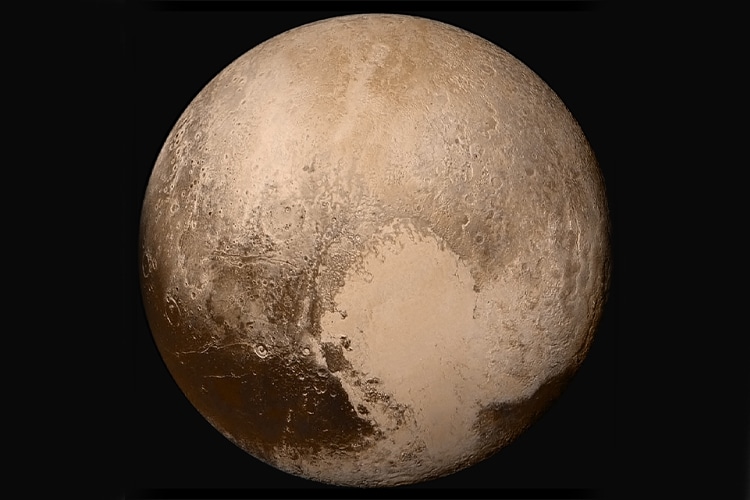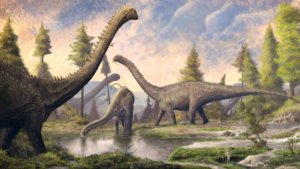Our Solar System consists of the Sun and all the objects in its orbit, including planets, their moons, asteroids, meteorites and comets. So, what are these planets and their names? What properties do they have and how important are they to our Solar System? Let’s see together.
How were the planets discovered?
For about 1,000 years, humanity turned their faces to the sky and tried to make sense of this gigantic structure. The Ancient Greeks, who followed the bright spots they saw as moving, called these bright spots planets, meaning “wandering”. Venus, Mars, Saturn and Jupiter, the planets of the Solar System we know today, were planets that were known, followed and legends were written about in ancient times.
With the invention of the telescope by Hans Lippershey in 1608 and the use of this invention by Galileo Galilei in 1609 for the first time to study the sky and make sense of the movements of the planets, many planets that we know today were discovered. As a result of the observations, humanity became acquainted with Uranus, Neptune, Pluto, the moons of these planets and the asteroid belt.
With the Space Age, which started with the launch of the Sputnik 1 satellite in 1957 and still continues today, countless unmanned spacecraft have embarked on their journeys over the years to understand the limits of our Solar System. Most notably, Voyager 1 became the first space probe to cross the threshold of interstellar space. Voyager 1 has been traveling since 1977. Apart from the eight planets we know, scientists are investigating the reality of a ninth planet whose existence was proven in 2016.
Planets and What Are Their Names? What are its features?
Our knowledge of planets and their properties has increased exponentially since Ancient times. While we don’t yet have the opportunity to do detailed research by visiting other planets in our system, we have enough technology to go on extrastellar explorations like Voyager 1 did. Let’s take a look at eight known planets and one dwarf planet in our Solar System, sorted by their proximity to the Sun.
1) Mercury
Mercury , the smallest planet in our solar system and the closest planet to the Sun, with a distance of 57,910,000 km from the Sun, is slightly larger than the Moon, the satellite of our Earth. Mercury completes one orbit around the Sun every 88 Earth days. For this reason, it is known as the fastest planet. In Ancient Greece, Mercury was known by two names as Hermes when seen in the morning and as Apollo when seen in the evening.
Mercury has almost no discovered natural satellites and almost no atmosphere to keep its own heat. The planet’s daily temperature varies more than any other planet in the Solar System. The temperature of the surface of the planet facing the Sun rises to 450 degrees during the day and drops to -170 degrees at night.
2) Venus
The size of Venus is almost the same as our Earth. Venus, the hottest planet in the Solar System, has a temperature of up to 465 degrees Celsius. Although it is farther from the Sun than Mercury, the temperature of the planet is higher than Mercury’s because the atmosphere of Venus cannot reflect the sun’s rays back into space. Venus, also known as the Shepherd’s Star, was named after the Ancient Roman goddess Venus (Aphrodite in Ancient Greek Mythology).
Venus completes one full revolution around the Sun in 224.7 Earth days. Since there is no axial tilt on the planet, the existence of seasons cannot be mentioned. Another important feature of Venus is that unlike all known planets in the Solar System, it rotates in the opposite direction. Venus is undoubtedly the strangest of planets…
3) Earth
Earth ranks third in terms of its proximity to the Sun, the center of our Solar System. Earth’s atmosphere consists of 78% nitrogen, 21% oxygen and 1% other gases. It is known that our Earth, which has the distinction of being the only planet known to have life and liquid water in our Solar System, formed more than 4.5 billion years ago, based on radiometric dating and other evidence.
While the Earth completes its orbit in 23 hours, 56 minutes and 4 seconds, it completes one rotation around the Sun in 365 days, 5 hours, 48 minutes and 46 seconds. Our world has only one natural satellite: the Moon. Earth’s gravity interacts with other objects in space but most importantly with the Moon and Sun. Our Earth is known as the densest planet in the Solar System, thanks to its solid or rock-heavy structure.
4) Mars
Mars, which ranks fourth in terms of its proximity to the Sun in the center of our Solar System, is named after Mars , the god of war in Roman mythology. Mars is also known as the “Red Planet” as it has a reddish appearance due to the intense presence of iron oxide on the planet. With a thin atmosphere, Mars is an earth-like planet with volcanoes, valleys, deserts and polar regions on the Earth’s surface.
The rotation periods and seasons of the planet, which has two moons called Phobos and Deimos, are very close to the Earth. The average temperature of Mars, as the fourth closest planet to the Sun, is around -60 degrees. It is a planet that is considered possible by scientists to have life on it, due to its Earth-like features. For this reason, Mars has been the planet with the most spacecraft sent in history.
Radar data from the Mars Express and Mars Reconnaissance Orbiter exploration projects have revealed that large amounts of water ice exist in the polar and central regions of Mars. In 2008, Phoenix Mars Lander succeeded in taking samples of water ice on Mars. There are currently three different spaceships orbiting Mars. Observations made in 2006 discovered that there are salt water currents during the warmer months on Mars.
5) Jupiter
Composed of liquid hydrogen and helium, having a small nucleus Jupiter is the fifth closest planet to the Sun and is classified as a gas giant. Jupiter, the largest planet in our Solar System with a radius of 69,911 km, has a red spot due to a storm that has been going on for 350 years. Jupiter is the planet with the highest magnetic field strength in the Solar System.
While the average temperature of Jupiter is -140 degrees, the planet radiates outward from itself 2.3 times the energy from the Sun. Research has shown that Jupiter has the largest diameter a gas giant can reach. The planet completes one revolution around the Sun in 12 years according to Earth time. The largest of Jupiter’s 79 moons is called Ganymede. Until 1979, it was known that the only planet with rings in the Solar System was Saturn.
However, in 1979, photographs taken by Voyager 1 and Voyager 2 revealed that Jupiter also had rings. Jupiter is the brightest planet that can be viewed from Earth after Venus. We mentioned that Jupiter is the largest planet in the Solar System. If we need to make a comparison to better understand the size of Jupiter, it would be appropriate to say these words: The mass of Jupiter alone is 2.5 times the combined mass of all the other planets in the Solar System.
6) Saturn
Saturn, the sixth closest planet to the Sun in the Solar System, is the planet with the lowest density in the system. It is known that Saturn, which has rings made of rocks and ice, has many moons like Jupiter. Currently, the number of these moons discovered by us is 82. In addition to these satellites, Saturn also orbits numerous small moons. Saturn, which completes one full revolution around the sun in exactly 29 and a half years, takes its name from Kronos in Greek mythology.
Being one of the five planets that can be observed with the naked eye from Earth, Saturn, which has attracted the attention of humanity since ancient times, is largely composed of hydrogen and helium gases and is included in the class of gas giants just like Jupiter. Saturn’s low gravitational force has caused its atmosphere to spread much farther away from the planet’s core. Saturn has the most advanced ring system in the Solar System.
17th of the sky The rings of Saturn, which have been visible since they began to be studied with simple telescopes in the 19th century, have always attracted the attention of humanity and have been the most important feature that distinguishes it from other planets. Of the moons of Saturn, which is visible in the sky most of the year with its yellowish color and brightness, only Titan can be observed with simple telescopes. Saturn is the flattest planet in the Solar System. This oblateness of Saturn is due to the speed of the planet’s rotation around itself. Saturn, which hosts the fastest winds in the Solar System after Neptune, rains in the form of methane showers every thousand years.
7) Uranus
Uranus , the seventh planet closest to the Sun in the Solar System, takes its name from the Greek mythology sky god, Uranus. The biggest difference of Uranus from other planets in the Solar System is that its equator is located almost at right angles to its orbit.
Scientists speculate that this state of Uranus occurred when the planet collided with a planet-sized object a long time ago. This tilt on Uranus causes the seasons to last more than 20 years. Uranus completes one full revolution around the Sun in 84 years. The average temperature of Uranus, which has 13 rings, is known as -224 degrees.
Considering its temperature and structure, Uranus falls into the category of ice giants. The mass of Uranus is 14.5 times the mass of the Earth. The planet has 27 known moons. With these 27 moons, Uranus is the planet with the most moons after Jupiter and Saturn. Only one rover has ever been sent to Uranus.
8) Neptune
Neptune , the eighth closest planet to the Sun in the Solar System, takes its name from the Roman god of the sea, Neptunus. Neptune does not have any solid surface. Neptune, which is in the class of gas planets, is the coldest planet in the Solar System, together with Uranus, with its temperature falling to -218 degrees. The outer layer of the planet is composed entirely of helium and hydrogen, while the inner layer of the planet consists of water, methane and ammonia above its core.
Neptune is the first planet whose existence has been mathematically proven before it was observed. The planet has a thin and fragmented ring system that was noticed in observations in the 1960s and confirmed during Voyager 2’s 1989 visit to the planet. Neptune is distinguished from other gas giants by the large amount of water, ammonia and methane ice present in the planet. The planet takes on a blue appearance due to the methane found in the upper layers of the atmosphere.
Many different air movements are also observed on Neptune. Neptune’s first and only visit by humanity was made by Voyager 2. At the time of this visit, a Great Dark Spot similar to the Great Red Spot on Jupiter was present in the planet’s southern hemisphere. Weather events on Neptune include the strongest winds in the Solar system.
9) Dwarf Planet: Pluto
Pluto , which was classified as a planet from its discovery in 1930 until 2006, is the largest known dwarf planet in the Solar System. Pluto, the sixteenth largest object orbiting the sun, consists mostly of rocks. Pluto is one-fifth of Earth’s Moon, completing one full orbit around the Sun in 248 years.
Pluto has three known moons. One of these moons is almost half the size of Pluto. For this reason, this satellite and Pluto are considered by some scientists as a binary space system. The New Horizons spacecraft sent for exploration has confirmed that Pluto’s mountains are 3,500 meters high. Inside this spacecraft, there are the ashes of Clyde Tombaugh, who found Pluto. Tombaugh died before he saw the launch of the satellite to Pluto.
Why Did Pluto Lose Its Planetary Status?
Pluto was considered a planet when it was discovered in 1930. Until 2006, it was considered the ninth planet in our Solar System. However, with the development of observation systems in the 1970s, 2060 Chiron, a dwarf planet outside the Solar System, was discovered. The planetary status of Pluto, which was thought to be a minor planet until Chiron was discovered, began to be discussed among researchers.
In 2006, the International Astronomical Union felt the need to define the conditions for being a planet when objects similar to Pluto, but much larger than Pluto, were observed outside the Solar System in the late 1990s and early 2000s. Pluto, which did not comply with the specified conditions, lost its planet status. Other dwarf planets discovered are Eris and Ceres and are included in the Kuiper Belt. However, Pluto continues to be referred to as a planet by some researchers.
New planets found: Planet Nine
Planet Nine , or Planet 9 , is considered a hypothetical giant planet outside the Solar System. In 2016, Caltech researchers, with the scientific model they designed, proved that the unusual orbits of the Trans-Neptunian Objects are the result of the impact of another giant planet.
On January 20, 2016, Caltech researchers Konstantin Batygin and Michael E. Brown showed another indirect evidence, confirming with a new scientific model that the unusual orbits of the TransNeptunian Objects are under the influence of a giant planet. According to the theories, the Ninth Planet follows a large orbit around the Sun.
So much so that it can take twenty thousand years for the Ninth Planet to make a complete revolution around the Sun. Again, according to estimates, the mass of our Earth is about one-tenth the mass of Planet Nine. According to Brown, one of the scientists who came up with the Planet Nine theory, this planet is probably an ice giant and is mostly made up of heavy gas and ice.

